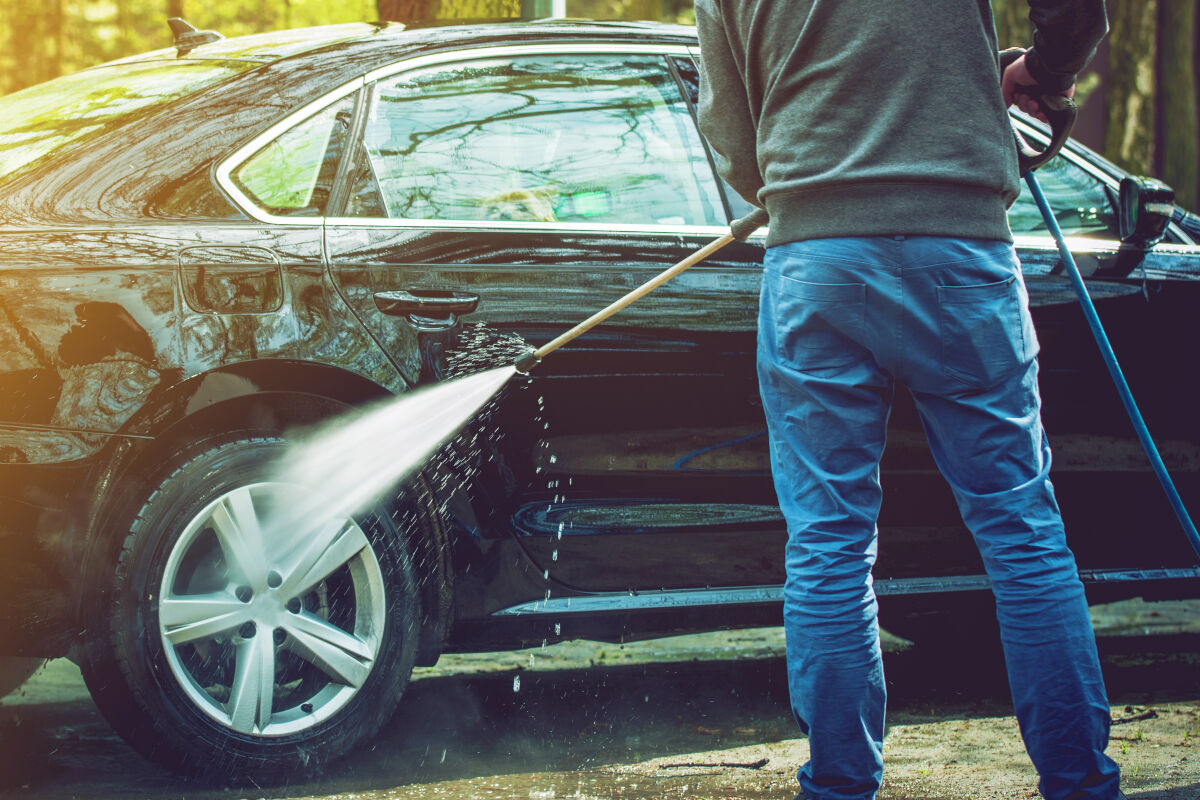Many of us enjoy having a clean and shiny car, and pressure washers are a useful tool for achieving that. However, before using a pressure washer on your car, it is important to be aware of two key factors: pressure level and nozzle tip size. To prevent damaging your car’s paint job, choose a pressure washer with settings between 1200 and 1900 pounds per square inch (PSI).

Nozzle tips come in different colors to indicate their size. For cleaning wheels and heavily soiled areas, use a 25-degree (green) tip. A 40-degree (white) tip is suitable for washing the rest of the car’s surfaces.
Materials needed:
Garden hose connected to water source
Pressure washer
Towels
Special detergent formulated for pressure washers
When using a pressure washer to clean your car, it is important to use the correct pressure level and nozzle tip size. Begin the pre-wash by selecting a 40-degree nozzle tip and starting at the top of the car, working your way down and removing any debris from the roof, hood, trunk, side panels, wheels, hubcaps, and wheel wells. Avoid spraying directly into the front grill as this may damage the radiator. Instead, spray downward at a 45-degree angle.
Soap and Suds:If your pressure washer has a soap tank, be sure to check the water-to-soap concentrate ratio and fill the tank with the diluted soap solution. If your pressure washer lacks a soap tank, apply soap by hand with a rag or sponge. Set your pressure washer to the soap setting or use a soap nozzle tip. Apply soap over the whole vehicle, allowing it to sit for at least five minutes. If you’re washing your car in direct sunlight, rinse off the soap before it dries.
Rinse Time:Rinse the car thoroughly by switching the nozzle back to a 40-degree tip or setting the pressure washer to water output. Start from the top of the car and work your way down, rinsing off all the soap thoroughly, repeating two or three times until the vehicle is completely rinsed.
Drying Time:Dry the car with a hand towel, soft cloth, or shammy to eliminate water spots when air drying. Avoid gravel surfaces as the kicked-up stones could damage the paint or crack the windows. Park your vehicle on concrete or blacktop surfaces instead.

